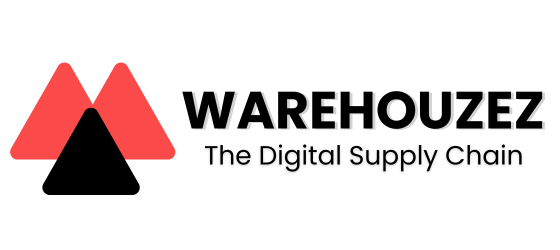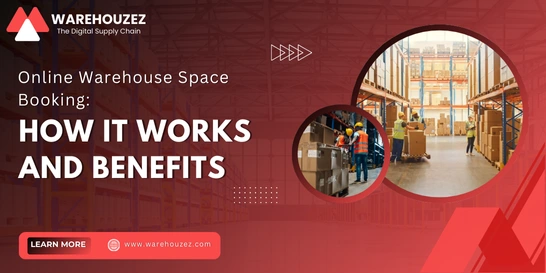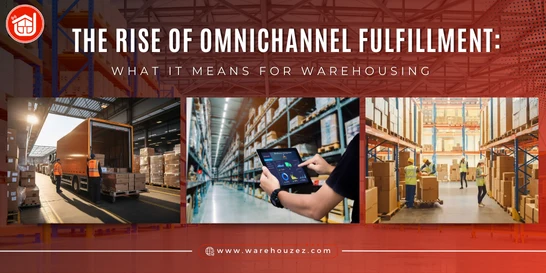The Top 9 Warehouse Management Trends You Need to Know for 2023
The Top 9 Warehouse Management Trends You Need to Know for 2023
Warehouse management can be a critical aspect of a business's operations. It involves the coordination of various activities related to the storage and management of products within the warehouse. This includes inventory control, order fulfillment, shipping, and receiving. It is important for businesses to ensure that their warehouse operations are efficient and cost-effective in order to maximize profits and minimize losses. Proper warehouse management can also help to reduce errors, improve customer service, and increase productivity.
The warehouse management landscape is changing rapidly. Consumer demand is increasing, while at the same time, the way consumers shop is changing. Online shopping is no longer a niche market; it is the preferred method of shopping for many people.
In order to meet the needs of consumers, businesses need to stay up-to-date on the latest warehouse management trends. Here are the top 9 warehouse management trends you need to know for 2023:
1. Automation
Automation is rapidly becoming a key factor in the success of warehouse operations. Automation can streamline processes, improve accuracy, and ultimately reduce costs. Automation allows warehouse workers to handle more products with fewer errors, as well as to move around the warehouse faster and more efficiently. Automated storage and retrieval systems, such as automated guided vehicles (AGVs) and automated storage racks, are becoming more commonplace. Automated order picking systems, such as robotic pickers, are also becoming increasingly popular. And lastly, automation allows warehouses to better manage inventory levels, which is essential for predicting and controlling customer demand.
2. E-commerce/Omnichannel
In a world dominated by online and mobile shopping, it is important for warehouses to stay ahead of the curve. E-commerce and omnichannel have transformed the way that people shop, and likewise, the way that warehouses are managed. Warehouses must be able to handle orders from multiple channels, including online and physical stores. This requires efficient inventory management, order fulfillment, and streamlined shipping processes. Companies must focus on creating flexible and robust supply chains that are able to respond quickly to the ever-evolving needs of customers.
3. Sustainability
Warehouses are increasingly focusing on sustainability. Many warehouses are turning to renewable energy sources, such as solar or wind power, in order to reduce their carbon footprints. Additionally, warehouses are implementing waste reduction practices, such as paperless order systems and the use of reusable packaging materials. As environmental concerns become more prevalent, warehouses must focus on being mindful of their impact on the environment, as well as reduce their own energy costs.
4. Worker Satisfaction
Worker satisfaction is becoming increasingly important in warehouse management. Employees are the foundation of warehouse success and should be treated accordingly. To ensure worker satisfaction, warehouses should focus on providing employees with a safe and comfortable working environment, as well as clearly communicate their expectations and provide adequate training.
5. Shelf-Life Extension
Warehouse shelf-life extension is becoming more and more important to ensure the maximum shelf life for products. The main focus of warehouse shelf-life extension is to reduce the number of products that are damaged or spoiled before they can be sold. Generally, shelf-life extension is accomplished through better inventory tracking and management, as well as temperature control systems. Additionally, warehouses should focus on properly training their employees on shelf-life extension techniques, including temperature control and storage methods.
6. Artificial Intelligence
(AI) is quickly becoming a key factor in warehouse management. AI is revolutionizing the way warehouses are managed, allowing for improved accuracy and efficiency throughout the supply chain. AI can be used to automate various warehouse processes, such as inventory tracking and order fulfillment. In addition, AI can help warehouses improve their forecasting and help them better anticipate customer demand. As AI continues to be embraced by the warehouse industry, it will become increasingly important for organizations to explore the possibilities of how AI can help them run their warehouse operations more efficiently.
7. Omnichannel Inventory Management
Omnichannel inventory management is essential for warehouses competing in a primarily e-commerce world. As customers purchase items from multiple sources, warehouses must be able to keep track of the inventory across all channels. More specifically, this type of inventory management requires warehouses to integrate products from multiple channels into a single inventory system. This allows warehouses to better track orders, as well as accurately reflect customer demand.
8. Warehouse Robotics
Warehouse robotics is becoming increasingly popular as a way to reduce costs and increase accuracy. Robots are being used for a variety of tasks, such as pick and place, packing, labeling, sorting, and labeling. Additionally, robots are becoming increasingly sophisticated and are being equipped with vision systems and grippers, allowing them to perform more complicated tasks. As robots become more accessible and cost effective, there is a growing trend for warehouses to adopt robotics to improve their operations.
9. 3D Printing
3D printing is rapidly becoming an integral part of the warehouse industry. 3D printing is an economical solution for fast and accurate production. In the warehouse, 3D printing can be used to quickly produce packaging materials and labeling information, as well as to quickly create prototype products. Additionally, 3D printing can be used to quickly create custom items on-demand, which is becoming increasingly important in an e-commerce world.
Final Thoughts
Warehouse management is constantly evolving and it can be difficult to stay up on the latest trends. However, staying abreast of the latest trends is essential for success in the warehouse industry. The 9 trends outlined in this blog post should provide a good overview of the trends that you should be aware of for 2023. Automation, e-commerce, sustainability, worker satisfaction, shelf-life extension, artificial intelligence, omnichannel inventory management, warehouse robotics, and 3D printing are all important factors in the success of a warehouse operation. By staying current on these trends, businesses can ensure that their warehouse operations remain successful for many years to come.



